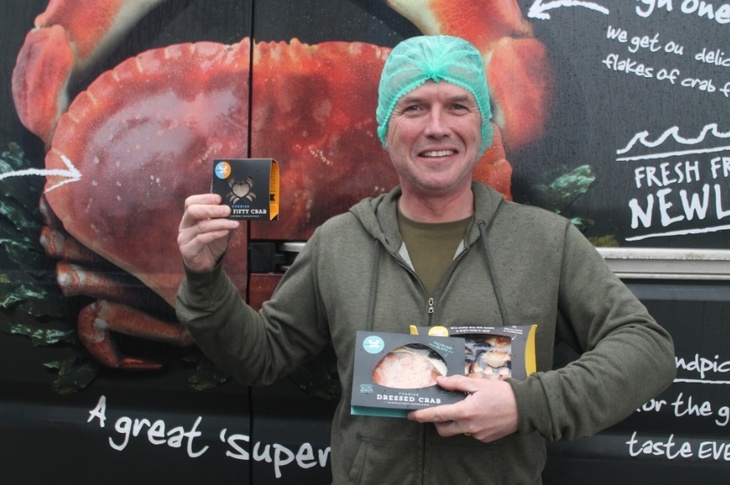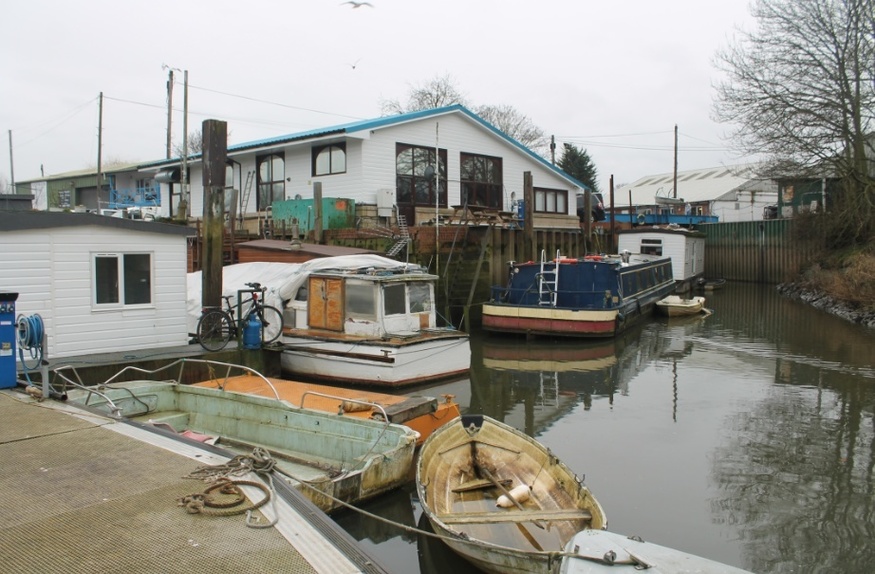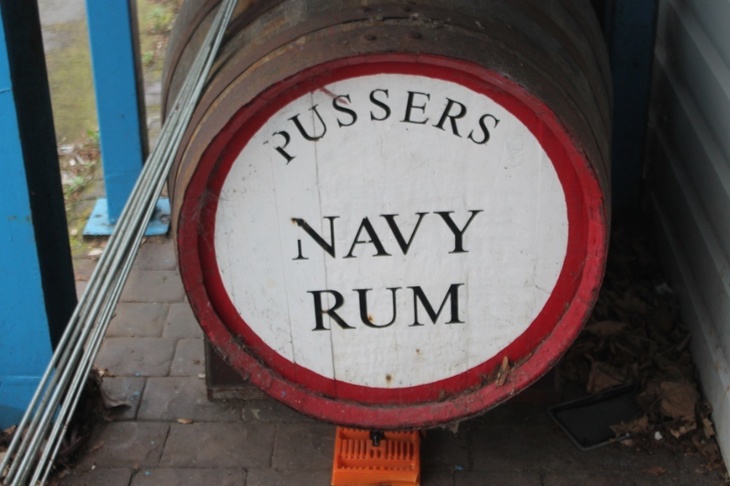
Plenty of Twickenham locals don't even know Swan Island exists. 60 years back, Les Kibble regularly passed it as a boy. He only found out about it when his company LJ Motorcycles moved here in 2006.
"The modern bike rider is a commuter," he tells us, sipping his cup of coffee, "they don't know what they've got. They get on the bike, hit the button and drive. To be fair it's a lot cheaper going into London on a scooter than it is any other way."
He motions to an orange bike: "I can get that on the road for £1,800 a year. You could throw it away at the end of the year and still have paid less than an annual rail ticket."

Les's chatty demeanour is typical of the island folk here. His is one of a dozen or so businesses inhabiting a jumble of sheds and warehouses, peppered with nautical gimcrack — a ship's wheel here, an empty barrel of Pusser's naval rum there.
That's only half the story; 40 families live on the houseboats, yachts, barges and floating homes skirting Swan Island. (Until 2016, someone was living on a Dunkirk small ship. It sadly sunk.) Together they form a half solid, half bobbing village in the Thames.

On a drizzly Thursday in January, woodsmoke curls from stovepipes. A saw buzzes away in the Newmans boatyard, and there's the faint aroma of crab — not our imagination, it's coming from Seafood & Eat It. They receive fresh fish from Cornwall daily, box it up and drive it out to Waitroses and fishmongers across London.
"It is fantastic working here, a really, really good atmosphere," says delivery driver Laurence Weaver. Island life must be in the company's blood; before they came to Swan Island, they were stationed just upstream at Platt's Eyot.

"It's a real community spirit with all the boat people living here, some very interesting characters."
On our wander around the island, we also meet cabinet maker David Elias (currently crafting a boardroom table from stainless steel and black walnut), and Affinity Crew, who deal in logistics for major London events. They've just set up the NBA at The O2. Others onsite include a guy who specialises in jazz and blues vinyl reissues, and a Japanese shoji screen maker. Add to that those who call Swan Island home, and you have a singular London community.

So where did it all spring up from?
Fiona Gunnion's dad, Frank Newman, is the answer. Fiona chats to us in her office overlooking the floating village — a replica diving helmet that once belonged to her father peering over her shoulder. "He was actually a master cooper," she says, "he built barrels in Wandsworth. And forgive the pun, but the bottom fell out."

Looking to use his skills in a different area, Frank got involved with boats, setting up a shipyard just off the island.
"He started off small. Everyone laughed because he called it 'Newman Shipyards' and people said 'but you've only got one yard!'"

Frank had the last laugh, leaping at an opportunity to buy the entire island. The shipyard expanded onto it and, from the 1980s, people were invited to live here. Frank family has been renting out the moorings since (the islanders only have good things to say about their landlady Fiona).
You might think renting a boat would be thriftier than renting a flat. In practise, it's only those who own their boats who make any real saving. Fiona herself lives on terra firma in Kew. "I don't think you have to love boats to live on a boat. But you have to love the water," she says.

The boatyard remains the heart of the island. Michael Horwood has worked here for 34 years, doing boat repairs and maintenance. That's on anything from 25-foot day boats to 40-50 foot houseboats.
The big pleasure boats you see in central London sail up here for a spruce up. The Thames's two fire boats — which slurp up the river water before spewing it out again — are serviced here, too. One of them is on the slip today.

But this isn't exactly an industry that's thriving. "Wooden boats are dying down and people who have got them haven't really got the money to spend, because it's not a cheap exercise," says Michael.
Other boatyards haven't weathered the storm. Tough Brothers Boatyard in Twickenham once built hulking great ships. It was also where, in May 1940, 100 little ships set off for Dunkirk. It's now apartments. A happier story can be found on neighbouring Eel Pie Island, where the boatyard's still going great guns.

Though Michael isn't an actual islander, his colleague Joe (not around today) has lived here for over 50 years. What is it that makes people want to live in foundation-less houses — and in such Stygian weather too?
As we edge down onto the pontoons that form narrow, unsteady streets between boats, we run into Adam Brown. "I moved from Dorset and I didn't want to live in a house," he tells us, "Everybody helps each other out, keeps an eye on each other's boats."
He proudly shows us his own vessel, which dates back to 1913, and was used to shuttle about top naval brass in its day.

Artist Tristram Ellam-Bell comes out to see what's going on, as we clank about on a particularly wobbly strip of pontoon outside his boat. He moved aboard the Charlotte Sara from a Twickenham housing estate, and much prefers island life.
We ask him about the name of his boat. "That was with her when I bought her," he says, "To change names it's very bad karma. You have to do it on a full moon at the beginning of the month and you have to circle her three times saying the new name."

He invites us aboard, showing us the stove that heats his living quarters. At this time of year, wood and coal can run up a bill of up to £60 a week. That's just one of the downsides.
"Obviously you can't have a flushing toilet in the river," says Tristram, "so you have to have a potty, so every week I have to do what I call 'the nasty', where I empty it out.'"

The proximity of the vessels is something we've clocked too: "You're very close to your neighbours, so it's important to have good relations, says Tristram, "Even still, as soon as you go on that pontoon, it bangs around.
"It's a question of live and let live. If you got pissed off about every single noise you'd go crazy."
Not so much trouble in paradise, as niggles.

As the skies brood greyer, drizzle fattens into rain and the weather forecast threatens snow. Swan Island seems to float further away from the mainland, and reality. Such is the beauty of London; sometimes it couldn't feel further detached from itself.















